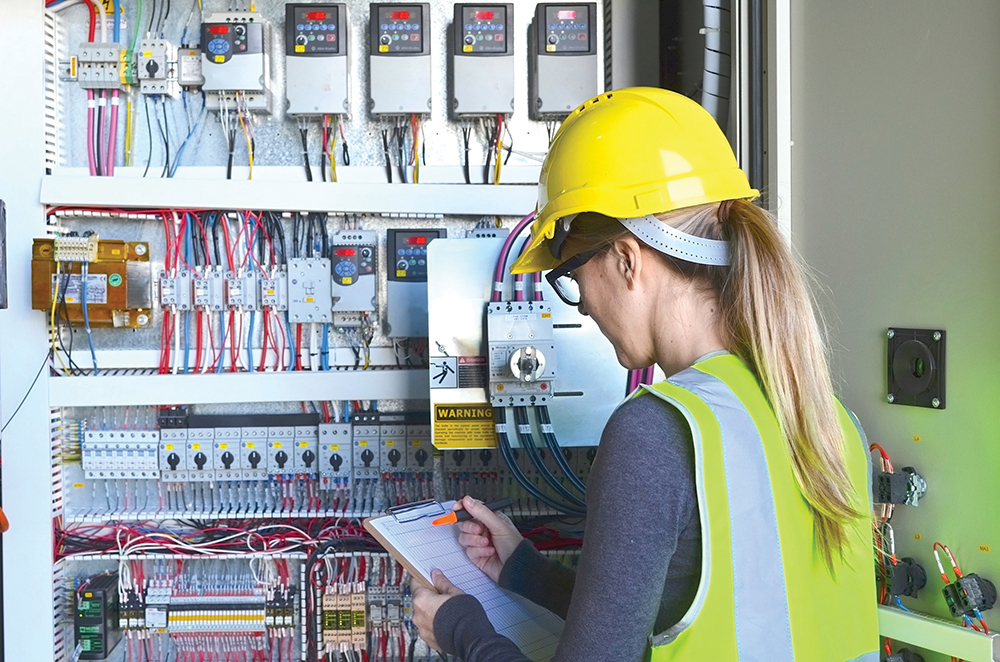Two readers have e-mailed me with the question, “Is there a test I can take to become a certified National Electrical Safety Code‚ (NESC‚) inspector?” The short answer is, no. There are no such tests for the NESC‚ because certification as a NESC inspector does not exist. That doesn’t mean there are no qualified NESC inspectors. Let me explain.
Why do we need inspectors?
In Delaware, we consider electrical inspectors to be very important in protecting the property owners from property damage and the public from electrical hazards. Let’s face it: the people who design and install electrical facilities often screw up. In Delaware, every new or upgraded residential, commercial, and industrial building must pass inspection before a certificate of occupancy is issued. The electrical inspectors, who review the drawings and inspect the installation, catch a lot of the violations and hazards.
By law in most states, outside electrical facilities owned by electric utilities have to comply with the National Electrical Safety Code. The people who design and construct these facilities often screw up and because the facilities are outside, the condition of the facilities deteriorates. Both create hazards to the public.
Hazards are also created by field condition changes. For example, the homeowner installs a swimming pool under the aerial electrical service to the house. A sign is installed under and too close to utility lines. A fixed bridge over a river is replaced by a drawbridge to allow sailboats to go upstream under a power line crossing that was not designed for sailboats. A building is constructed too close to existing power lines.
In some cases, a building inspector should have caught these changes and disapproved the installation or notified the utility. The NESC‚ in Rule 214A requires all new facilities to comply with NESC‚ when placed in service and existing facilities to be inspected “at such intervals as experience has shown to be necessary.” Most utilities in the U.S. do not have inspectors dedicated to inspecting new installations. They assume their design engineers and construction personnel do not make mistakes and they rely upon these people to perform the inspection to insure compliance. As to facility deterioration, most utilities only inspect their poles for ground line deterioration. They rely on their field personnel to catch other deteriorations and field condition changes. Most utilities only use dedicated inspectors after someone gets killed or injured. The inspector is usually called upon to determine if the installation involved with the accident was in compliance with the NESC at the time of the accident.
How can one become a certified electrical inspector?
Here in Delaware, a person wanting to be a state-certifiedNational Electrical Codeinspector must have at least seven years’ experience as an electrician and must pass three tests. I understand that a person must be an expert on the NEC‚ in order to pass the tests. Inspector certification varies state to state.
To be recognized in a court of law as a qualified NESC inspector, one must prove he is an expert on the NESC‚ and prove he has extensive experience inspecting electrical facilities. Since inspection of aerial electrical facilities usually involves taking very accurate measurements of clearances, one must also show proof of extensive experience taking such measurements.
NESC expert
To become an expert in anything, one must obtain a high degree of skill or knowledge and understanding of that subject. The NESC is not easy to understand. Unlike the NEC‚ most of the NESC is directed toward the engineers who design the facilities. I’m not saying you have to be an engineer to understand the NESC‚ but it helps. The NESC rules often tell us how safe something must be, but do not tell us how to build it to make it that safe. For example, many of the NESC rules require some conductors and equipment to be “effectively grounded.” In the definition section, the NESC defines effectively grounded as “Intentionally connected to earth through a ground connection or connections of sufficient low impedance and having sufficient current-carrying capacity to limit the buildup of voltages to levels below that which may result in undue hazard to persons or connected equipment.” I’d say that if something is effectively grounded it is completely safe. So how does one design the facilities to insure that something is effectively grounded when the NESC does not tell you what is “sufficient low impedance” or “sufficient current-carrying capacity.” It also does not tell you what voltage levels “may result in undue hazard to persons or connected equipment.” If someone is injured or killed when they touch a conductor that was supposed to be effectively grounded, then the conductor was obviously not effectively grounded.
To answer the question, the engineer must have knowledge of and draw upon other industry standards to meet the requirements of the NESC. For example, IEEE Standard 80 addresses what is undue hazard to persons and how to calculate the hazard magnitude given the ground system impedance. So how does one become an expert on the NESC? In my case, I have been designing electric power distribution facilities to comply with, and teaching all aspects of the NESC for over 34 years. I have also been an active member of the NESC‚ Clearances Subcommittee since 1994 and the NESC Interpretations subcommittee since 1996. How does one gain extensive experience inspecting electrical facilities? In my case, over the past twenty-five years, I have assisted attorneys and claims personnel with over four hundred accidents involving electric power distribution facilities. My assistance usually involved taking clearance measurements, analysis of the measurements, and testifying in the litigation.














Find Us on Socials